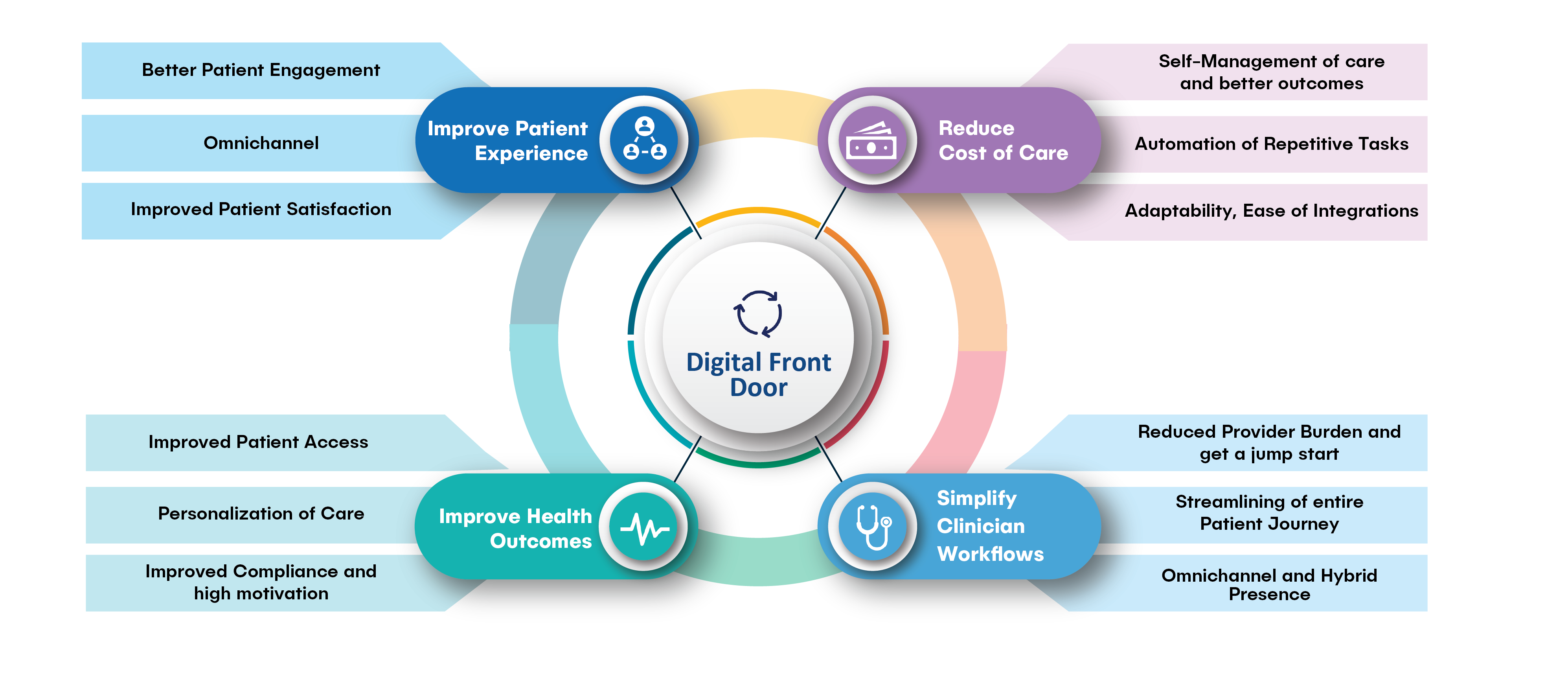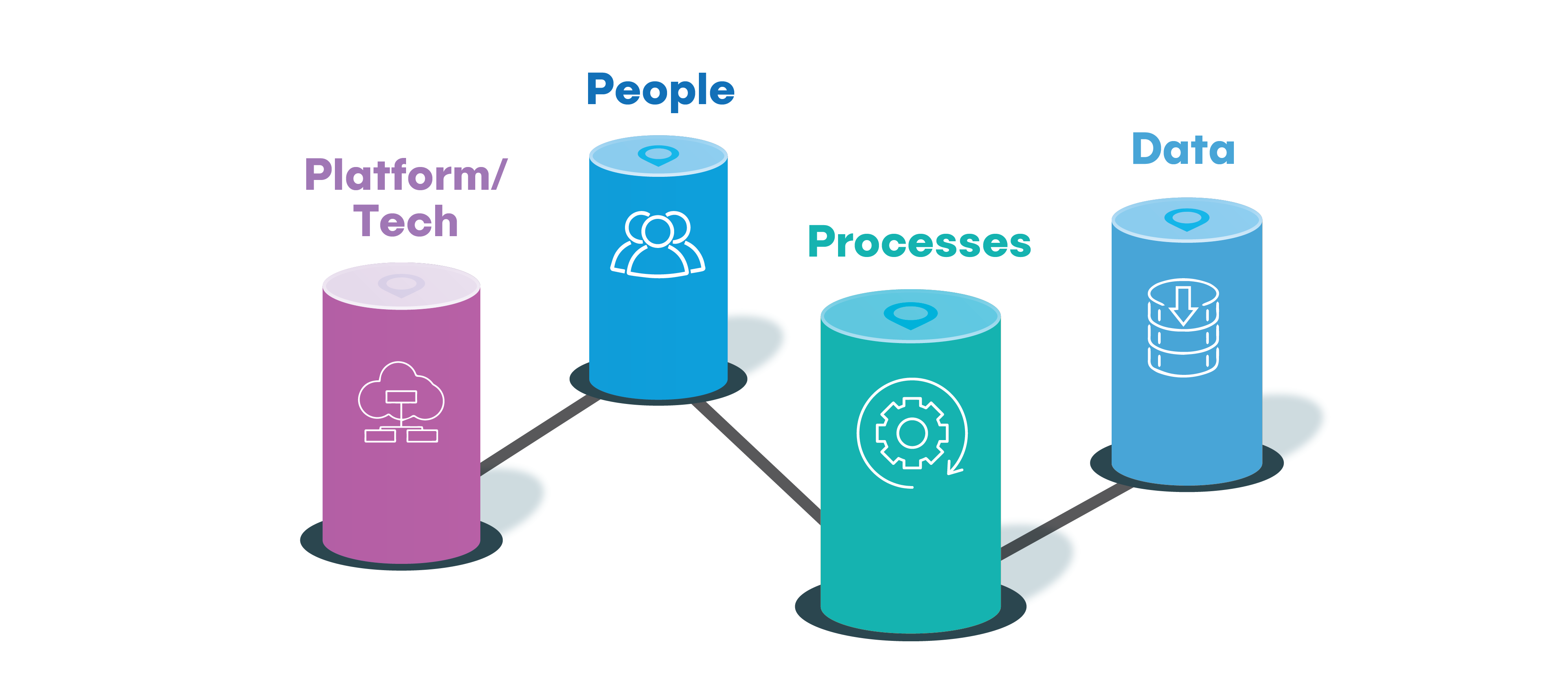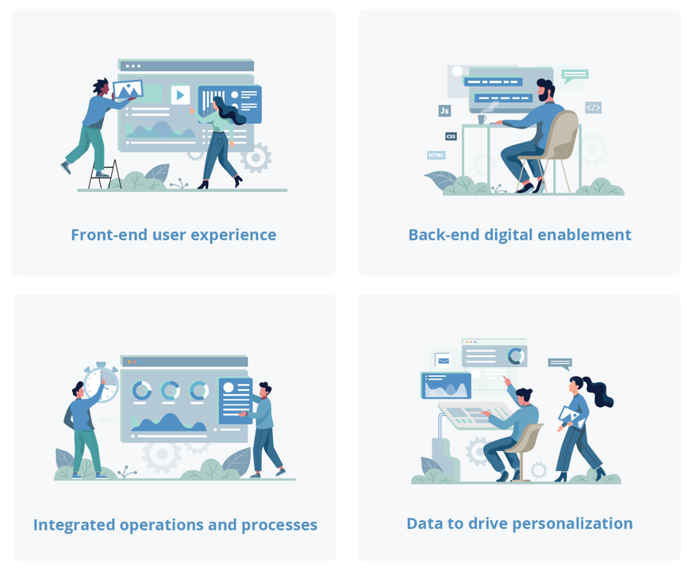Authors: John Squeo – Sr. Vice President, Providers & Healthcare Services
Provider organizations are seizing this moment to emerge as a person-centric, tech-enabled digital pacesetter
Clinical, business, and technology leaders across provider organizations agree that there is an unprecedented opportunity and imperative for emerging from the pandemic as a person-centric, technology-enabled pacesetter in their individual markets. Prioritizing digital engagement, digital interactions and the use of third-party or homegrown digital products and services are the three objectives of competitive healthcare delivery organizations.
When brought together, and married with a provider’s stand-out strengths, patients receive timely and accessible care, satisfying experiences, and better health and financial outcomes.
Digital isn’t the cure-all to provider challenges, but it is viable, scalable, and reliable
Healthcare delivering systems of all types are facing enormous hurdles right now – staffing shortages, financial woes, regulatory requirements, and cybersecurity on top of meeting heightened consumer choice. Moving forward with the digital-first, tech-enabled approach that we espouse not only addresses many current challenges but realizes a host of provider goals like those shown in Figure 1.

Fig 1: Achieving the Quadruple Aim with Digital-first, Tech-enabled Transformation
Getting beyond the Digital Front Door
While the term digital front door is now interpreted in various ways, it still paints a valuable picture for the entry point of contact for a provider organization’s stakeholders like consumers, existing patients, employees, clinicians, community partners, and vendors.
Gartner defines digital front door (DFD) as the domain that “engages consumers at the earliest stages of their health journeys, and acts as the primary conduit to connect consumers with healthcare products, services and information that help them achieve their health goals.”
As we have seen, provider organizations may view the DFD as the main technology access point through a web site, portal, or mobile app. However, they may view the DFD symbolically as the hub of engagement with consumers. The symbolic DFD view helps us map out the consumer or patient journey and the various digital, self-service, in-person, and live-distant touchpoints that the larger ecosystem must support.
Digital Front Door Pillars
 Fig 2: The four pillars to a digital-first approach
Fig 2: The four pillars to a digital-first approach
People: Any entry point and user experience requires a human-centered approach to ensure usability and that the experience represents the provider’s brand and values. Aligning needs and expectations among key caregivers and care consumers will be the key differentiator in increasing the adoption of the digital front door.
Process: Any solution that underpins each experience should emphasize identifying and prioritizing key processes suitable for digitization. Then, we can apply the right level of automation and intelligence across all touchpoints. Here, it is important to understand the clinical, operational, and experiential environments through which the solution delivers information or services.
Platform/Technology: Platformizing the solution using the right technology is crucial for successful implementation. The platform should have the capability to support an integrated ecosystem of healthcare services that patients can seamlessly access through their preferred channels. It should enhance engagement and connect with patients throughout their healthcare journey across every touchpoint. Technology should be robust, have security as a primary focus, and scalable to a larger number of users and, possibly, other services and business units. It must have the potential to integrate with ancillary healthcare systems through open API frameworks.
Data: Disparate data sources like clinical, claims, SDoH, lab, pharmacy and IoMT, should be able to combine and present a holistic picture of the patient profile, enabling sophisticated analysis for a variety of quality, satisfaction, clinical, population health metrics and value-based contract monitoring.
Creating a digital-first, tech-enabled provider ecosystem
Every in-person, virtual, or digital interaction holds the potential to either deepen or erode engagement and loyalty – to elevate or endanger outcomes. While many provider organizations are focusing solely on the “digital front door” and point solutions, we believe that addressing four inter-dependent factors creates complete, optimal, and high-value outcomes across all the whole consumer journey.
As shown in Figure 3, four areas come together -- back-end systems, data integration, streamlining and automating process, and personalizing through data analytics – to deliver a consumer-centric experience that achieves enterprise objectives.

Fig 3: Four aspects to creating a digital-first, tech-enabled provider ecosystem.
- Front-end user experience
- Many healthcare organizations are focused on one aspect of digital transformation, limiting to patient access points like online appointment scheduling and digital provider directories, wayfinding, or patient portal features.
- The goal of the front-end user experience is to eliminate friction and seamlessly connect patients to the most appropriate level and channel and source for care at the time and location they want.
- This means acting as the intuitive journey facilitator across potentially many participants and systems.
- Back-end Digital Enablement
- Focusing efforts just on the digital front door rather than what’s behind the door erodes consumer confidence when their data is incorrect, communication doesn’t find its way from a portal to a person, there is fragmentation in the journey, or technical features don’t work as intended.
- Focusing efforts just on the digital front door rather than what’s behind the door erodes consumer confidence when their data is incorrect, communication doesn’t find its way from a portal to a person, there is fragmentation in the journey, or technical features don’t work as intended.
- We take a Service Design approach that looks from the outside-in and the inside-out, taking a view from before consumers knock on the digital front door through to individual systems that interact, and data sources that are delivered through the DFD.
- Integrated Operations & Processes
- Telemedicine and virtual care’s accelerated adoption highlights the need to ensure that digital consumer experiences are supported by the right processes and operational performance behind the scenes.
- Process is the connective tissue that supports frictionless and intuitive customer experience,
- This level of customer awareness and exceptional support is realized through a design-driven approach to lean operations, intelligent automation, and organizational alignment, an approach that aligns all aspects of response to the underlying needs and wants of the customer.
- Data to Drive Personalization
- Data’s value comes from its power to create a shift from episodic, interventional care to continuous, preventative healthcare that is personal yet population focused.
- Optimizing digital experiences can include monitoring patients’ health status from wearables, self-reported health tracking data, lab data, and RPM.
- Defragmenting care is key to outcomes and differentiation
- Sharing, integrating, and interpreting all these data sources to achieve forward looking care coordination and management.
- The result is a connected ecosystem that puts the consumer in charge of their health with full awareness of their data and access to choices.
- Organizations that support the consumer in this journey will become the go-to source for all things healthcare-related.
What can DFD enhances Healthcare Delivery Excellence?
There are benefits that healthcare delivery organizations can realize from a digital-first, tech-enabled ecosystem for all stakeholders, but particularly patients.
Patient Empowerment: DFD can enable patients in their healthcare decision-making journey by allowing them to do research across various health care options. It can be in the form of easy access points like online self-scheduling, registration/check-in, online payments. DFD is also the largest deciding factor in patient choice among providers
Engaged and in control: Seamless DFD can help patients take control of their healthcare services and shared data while engaging with their care team most suitable to their life, preferences, and technology comfort.
Patients as Champions: Patient experience is the key for healthcare providers to build loyalty among patients and is much more effective in generating brand lift as compared to the paid media; digital front door helps providers create excellent patient experiences.
Technology cohesion: It equips healthcare providers to build a cohesive strategy by reducing the number of integrations and vendors and leverage bundled savings thus enabling them to accomplish patient engagement. It not only streamlines, the patient’s healthcare journey at every touchpoint, but also aligns it with current pressing issues of healthcare.
Digital brand consistency: With this approach, organization provide a consistent digital experience to patients irrespective of the channel or purpose for the interaction.
Competitive strength: In light of the evolving digital landscape outside of healthcare, patients have started seeking convenience even in their healthcare interactions. They will be attracted to healthcare providers that offer convenient, easy-to-use, and efficient digital experiences.
CitiusTech has the experience, expertise, and technologies to realize digital-first, tech-enabled ecosystems for pacesetting provider organizations. Contact us to discuss your digital ecosystem goals, challenges, and progress made.
CitiusTech is at ViVE from 26th March to 29th March, 2023!
Come meet us at ViVE#2023 to discuss the Digital Front Door trends and challenges in healthcare.





